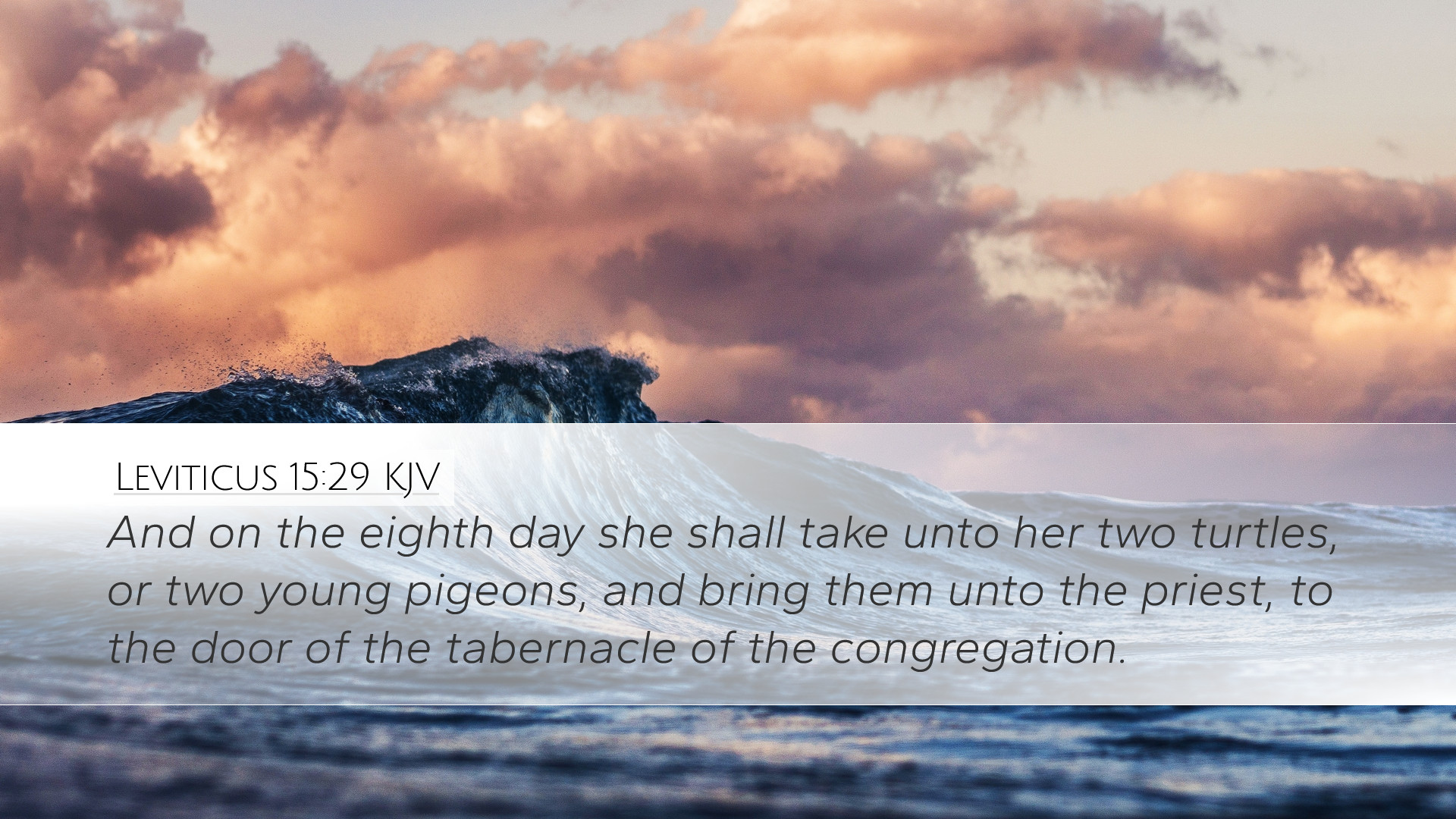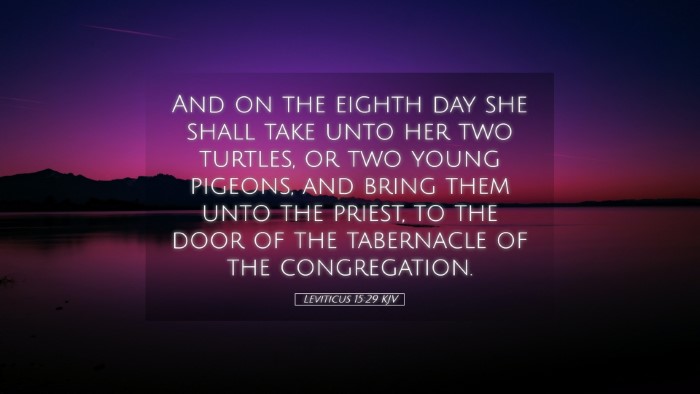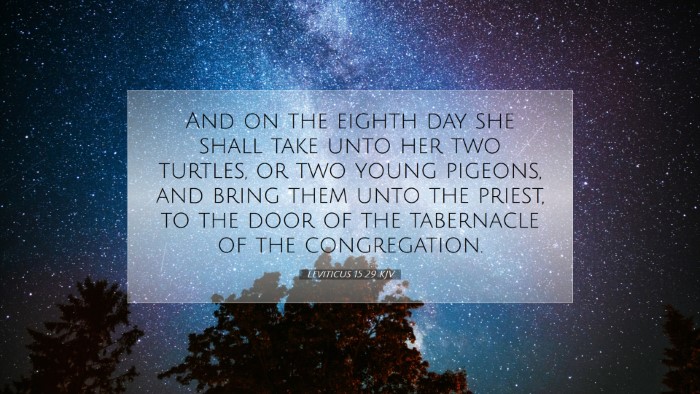Commentary on Leviticus 15:29
Introduction
Leviticus 15:29 states, "And on the eighth day she shall take for herself two turtledoves or two young pigeons, and bring them to the priest, to the door of the tabernacle of meeting." This verse is situated within a larger context concerning laws related to bodily discharges, particularly those that render an individual ceremonially unclean. This commentary explores the significance of these laws, the role of offerings, and the deep theological implications of purification in the Old Testament.
Context and Overview
The chapter addresses various conditions that result in ritual impurity. Leviticus 15, in particular, outlines the stipulations concerning issues related to bodily discharges, creating a framework not only for personal holiness but also for community purity. Matthew Henry emphasizes that these regulations were designed to promote a spirit of cleanliness among the people of Israel while symbolizing deeper spiritual truths.
Significance of the Eighth Day
Starting with the specific instruction for the eighth day, Albert Barnes notes the importance of the number eight in the biblical narrative, often correlating to new beginnings or a fresh start. In this context, it represents the completion of a purification process. The requirement for offerings on this day signifies a transition from a state of impurity back into communion with God and His people.
Offerings: Turtledoves and Pigeons
The choice of two turtledoves or two young pigeons for the offering as stated in Leviticus 15:29 held deep significance. Adam Clarke highlights that these birds were affordable, underscoring God's provision for all individuals, regardless of their socio-economic status. This reflects the accessible nature of redemption and reconciliation for all in the community of faith.
- Symbolism of Birds: The turtledove is often associated with love and peace, while the pigeon signifies innocence. Their use in sacrificial offerings embodies a deep spiritual act of atonement and reconciliation.
- Role of the Priest: The act of bringing offerings to the priest serves as an intermediary function, symbolizing the mediation necessary for approaching God, which reflects the broader biblical theme of mediation through Christ.
Theological Implications
The broader theological implications of these purification rites are profound. They reflect the holiness of God and the necessity for His people to maintain purity in order to remain in fellowship with Him. As Matthew Henry argues, the physical act of offering and the accompanying rituals point towards the spiritual reality of cleansing from sin. This points to the ultimate sacrifice of Christ, who fulfills the ceremonial law and provides true and complete restitution.
Understanding Purity and Impurity
As we delve into the text, we must grapple with the concepts of purity and impurity, which serve as a window into understanding God's character. Barnes articulates that these regulations serve to teach the Israelites about the seriousness of sin and the line between life and death—a crucial theme in the book of Leviticus.
- Rituals and Relationship: These laws are not merely about cleanliness but underscore the importance of maintaining a proper relationship with God.
- Cleansing the Community: The emphasis on communal purity denotes that individual actions have collective consequences, reinforcing shared responsibility within the community of faith.
The Place of Atonement
The specific instruction to bring these offerings to the "door of the tabernacle of meeting" signifies a critical element in the community’s approach to God. According to Adam Clarke, this indicates a place of encounter with God, where holiness meets humanity’s need for reconciliation. It foreshadows the ultimate access to God through Christ's sacrifice, who opened the way for believers to approach the Father directly.
Conclusion
Leviticus 15:29 not only delineates regulations for ritual purity but also encapsulates a deeper theological narrative about restoration, community responsibility, and the enduring nature of God's holiness. The insights drawn from the public domain commentaries of Matthew Henry, Albert Barnes, and Adam Clarke help unpack these themes, inviting pastors, students, and theologians to reflect on the richness found within these ancient laws.
In summary, while the specifics of the ceremonial laws may seem distant, their principles echo throughout Scripture, guiding us toward understanding Christ's redemptive work and the call to live in holiness as God's people.


